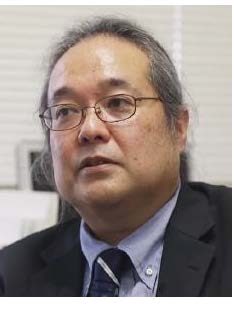Institute of Disaster Area Revitalization, Regrowth and Governance
About the Centre/institute:
Our institute is the first research facility in Japan devoted to research on revitalizing and regrowing disaster-struck areas. It was created on January 17, 2005, the tenth anniversary of the earthquake that devastated Kobe and neigboring areas in 1995. Since then, our institue has been made open to the public, joined by nationwide researchers, media representatives, volunteers and lawmakers.
In 2008, the institute took the initiative to create the Japan Society for Disaster Recovery and Revitalization.
Our missions are:
“Systematized recovery and revitalization philosophy”
“Institutionalized recovery and revitalization philosophy”
“Practice in line with recovery and revitalization philosophy”
We promote our researches from these three pillars, especially focusing the theme of “recovery and revitalization” which has been the weakest and thus unexplored research area in Japan, in terms of the disaster management cycle (prevention, emergency response, recovery and revitalization)
We aim to offer a foothold for the safety and secure world in this super-aged society as well as this unequal society.
Our institute tries to integrate actuals and research, and aims to find a way to pursue happiness of the affected people. We keep our researches to create institutionalized system for supporting “human-centered recovery”.
Message from the Director

Director, Institute of Disaster Area Revitalization, Regrowth, and Governance
Professor, School of Human Welfare Studies, Kwansei Gakuin University
Disaster Area Revitalization, Regrowth, and Governance was established as the first institute in Japan to focus on the reconstruction and revitalization of the lives of disaster victims under the philosophy of " human-centered recovery" out of a sense of social responsibility as a university in the disaster area.
Japan, which is frequently affected by natural disasters, has been active in disaster prevention research in the field of natural science from early on, but in comparison to this, research from the perspective of social science fields, specializing in the "disaster recovery and revitalization" of disaster victims and affected areas, has not been sufficient. The institute began as a pioneering center that raised a topic at the leading edge at the time of its establishment.
Since then, with the frequent occurrence of large-scale disasters such as the Great East Japan Earthquake and the torrential rains in western Japan, research institutes with "disaster recovery and revitalization" in their names have been established in various regions, and the Japan Society for Disaster Recovery and Revitalization has been established with this institute as its secretariat, making the term "disaster recovery and revitalization " a household word.
I myself was involved with the institute from the preparations for its establishment, and I planned and coordinated its first field survey on the March 2005 earthquake off the western coast of Fukuoka Prefecture. Partly because it was just after the launch, I remember as if it were only yesterday that a few of us, including the then-director Kōjirō Miyahara and senior researcher Shigeki Yamanaka, went to the site to conduct field research and reporter Seiji Shigemura of the Nishinippon Shimbun made a great effort to coordinate with related organizations and supported our field research.
Since then, the institute has conducted various studies and research with the support of many people. Thanks again to those who have helped us.
There are two future directions for the institute that I would like to focus on. One is “international collaboration.” Large-scale disasters have occurred frequently in recent years and an earthquake directly under the Tokyo metropolitan area and Nankai megathrust earthquakes are predicted to occur in the near future. Recovery from a large-scale disaster is not something that can be handled by a single country alone; building international support and cooperation relationships is essential and becoming increasingly important.
The second is to further stretch our wings to include “regional revitalization.” Many of the areas affected by disasters were suffering from falling birthrates, aging populations, and depopulation before the disaster, making the revitalization of these very areas a challenge. At the same time as efforts are being made to recover from disasters, there is a need for regional revitalization efforts to overcome regional weaknesses.
Last but not least, I will be assuming the position of director in April. Although my skills are lacking for the role, I am determined to serve with sincerity, standing on the shoulders of past directors.
I look forward to your continued support of and cooperation with the institute.
April 2022


